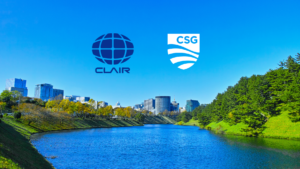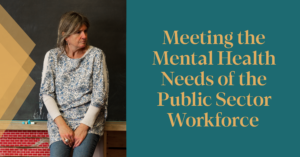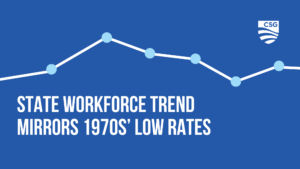This is the fifth of six installments in the series, “Inclusive Community College Career Pathways.” It discusses how the U.S. Department of Labor Pathways to Careers demonstration grants developed and provided work-based learning (WBL) experiences to prepare students with disabilities to join the workforce.
Work-based learning prepares youth with disabilities for work
Work-based learning (WBL) refers to real-world work experiences that allow youth and young adults to strengthen their employability skills. It can take many forms, including service learning, job shadowing, job tours, pre-apprenticeships, internships and summer jobs.
WBL plays a key role in preparing youth with disabilities to find and maintain work as adults. It can help them build their workplace confidence, identify and explore strengths and interests, develop hard and soft job skills, build their resumes and expand their professional networks. WBL experiences can even become full-time jobs.
WBL in the Pathways Projects
The U.S. Department of Labor Community College Pathways to Careers demonstration grants at Pellissippi State Community College in Tennessee and Onondaga Community College in New York provided various WBL experiences to help students with disabilities prepare for employment after college.
At Pellissippi State, students developed increasingly ambitious WBL goals in individualized student contracts. Staff supported students as they progressed from job shadowing to internships. Students also took progressively greater responsibility in arranging their WBL experiences so that by their third year they took the lead in finding their own internships with minimal assistance from project staff. By taking on greater responsibility arranging and engaging in WBL opportunities, students developed confidence and skills to find and maintain work after college.
Onondaga also provided several WBL experiences to students. The project held a job shadowing week and arranged a series of job site visits, informational interviews, internships and practicums. These opportunities were listed in a “student menu,” which students could use to identify and engage in WBL experiences that corresponded with their career goals.
Engaging employers
The two projects engaged and built strong networks with local employers to develop these WBL opportunities. They focused on developing WBL experiences that varied in intensity and scope and mapped to the majors, credentials and interests of their students. In addition, they collaborated with local employer networks as well as individual businesses and public-sector agencies to identify and develop WBL opportunities.
At Pellissippi State, business liaisons, career coaches and students reached out to businesses to develop and expand WBL opportunities. Pellissippi State worked with its local Employment Consortium to identify WBL opportunities and to educate businesses about hiring individuals with disabilities. The project also developed an employer toolkit to educate companies about disability etiquette and accommodations.
Onondaga engaged with the Central New York Employment Network to identify WBL partners. They focused on finding businesses across the nine industry tracks that students were pursuing and created a digital tool to organize this information. Onondaga also developed a brochure to educate employers about the advantages of hosting WBL experiences for students with disabilities.
Lessons learned
Onondaga and Pellissippi State encountered early challenges securing enough WBL opportunities and developed strategies to encourage more employers to host WBL experiences.
The project teams needed to take multiple approaches to engaging employers. Some businesses readily agreed to host WBL experiences for students, while other employers were more reluctant. Project staff learned to develop champions by first asking for small commitments (such as doing informational interviews with students) and eventually asking for bigger commitments (such as hosting interns).
The project teams further realized they yielded greater results by framing the initiative like other WBL programs, rather than as a disability-specific program. They focused on conveying the value of hiring credentialed, well-qualified candidates. This allowed students to disclose their disability if they chose and to practice asking for accommodations, if needed.
State examples
All states offer WBL experiences to youth with disabilities as a component of Pre-Employment Transition Services (Pre-ETS), which state Vocational Rehabilitation (VR) agencies are required to provide to students eligible or potentially eligible for VR services. Below are a few examples of state WBL programs offered in a college setting.
Florida’s Postsecondary Comprehensive Transition Program provides grants to help institutions develop “inclusive and experiential postsecondary education” opportunities for students with intellectual disabilities, which include internships, work-based learning and employment opportunities.Louisiana’s Postsecondary Apprenticeship for Youth (PAY Check) is a three- to five-semester program that allows students with disabilities to take classes at a community college and gain employment experience through paid internships or apprenticeships.Nebraska’s Certificate Programs allow students to take community college classes, tour businesses, and work part-time or participate in an internship with employer partners.
Previous Inclusive Community College Career Pathways Blogs:





